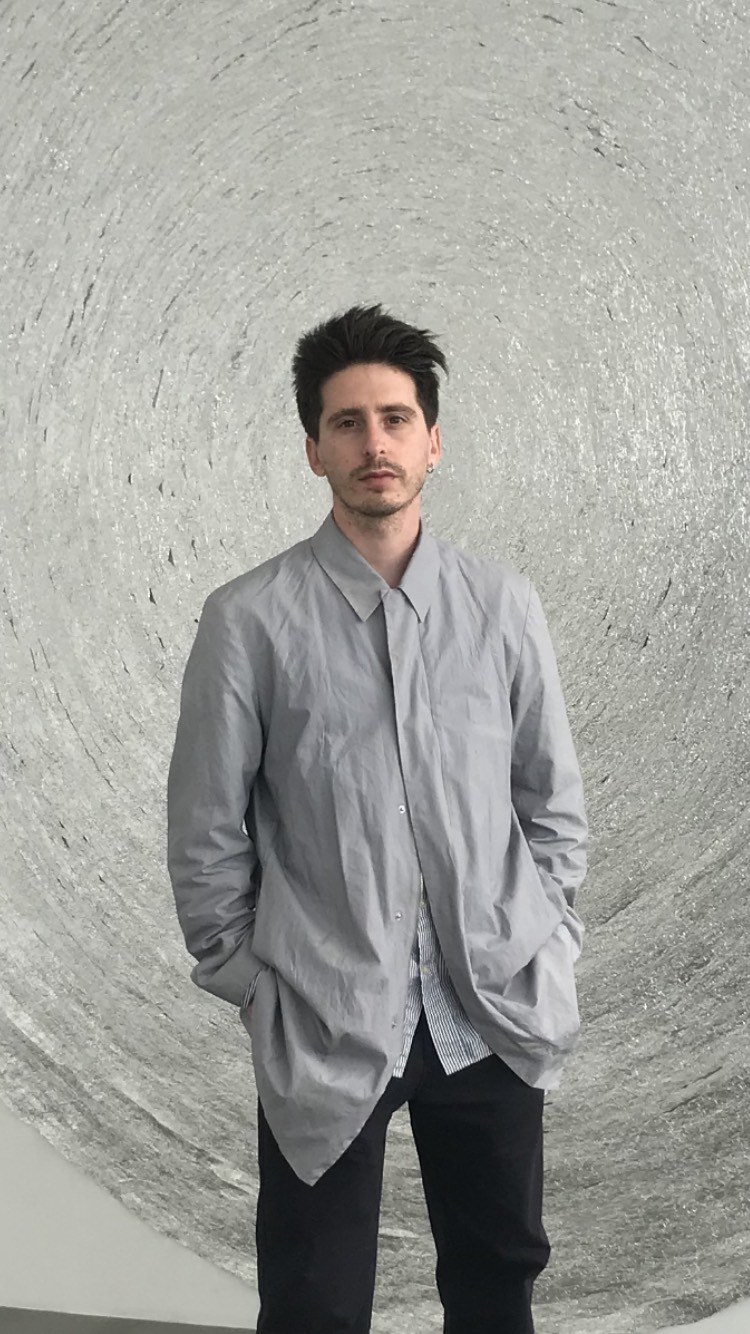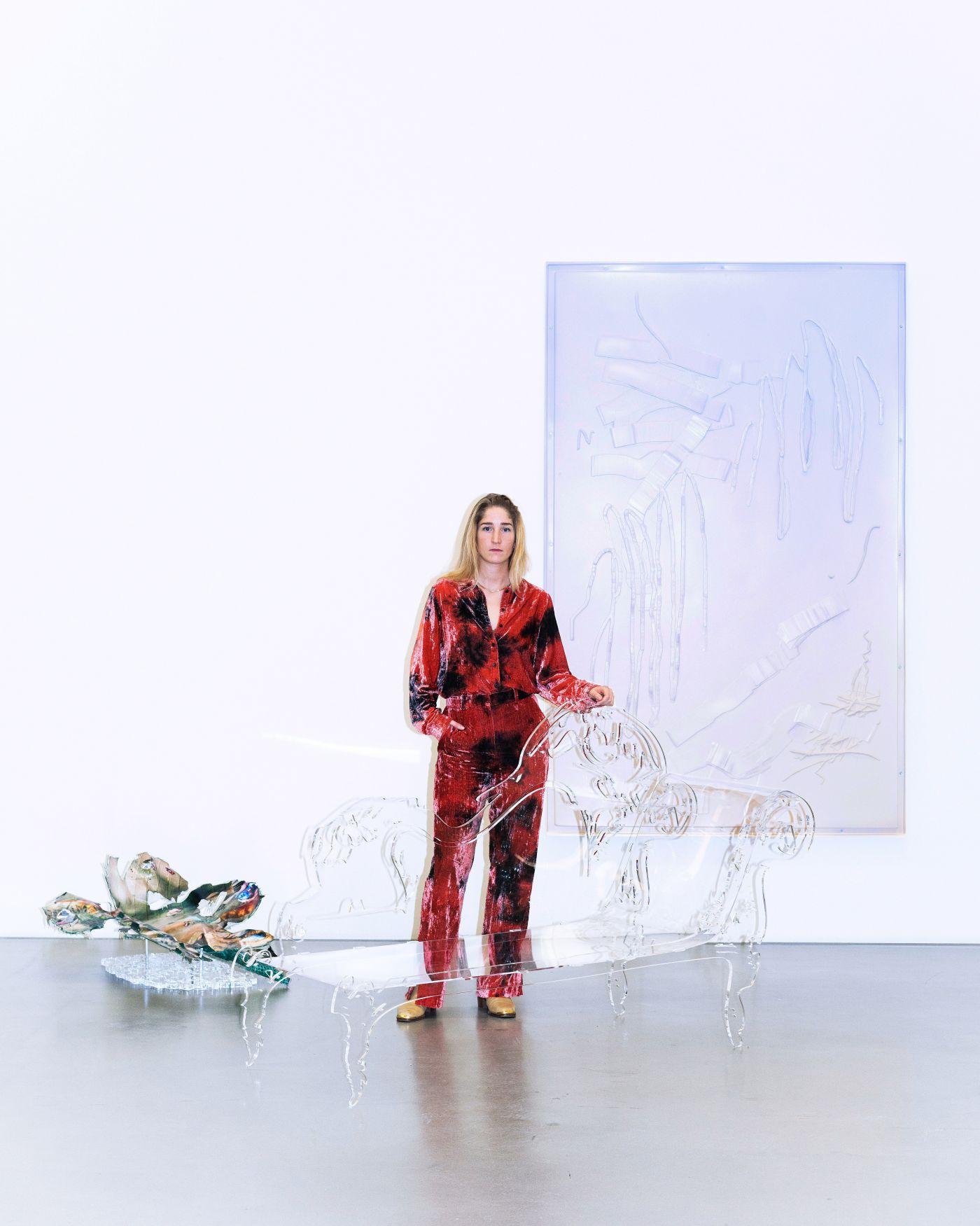October 2022
Arnon Ben-Dror
All that was solid
“All that is solid melts into air.” Why do these words from the Communist Manifesto still give me the chills? Perhaps it is their uncanny prophetic quality, envisaging the dissolution of reliable systems of living long before our post-Fordist age. Or perhaps it is their poetic nature, so unlike Marx’s or Engels’s usual technical terminology. Or could it be the intriguing aesthetic – tactile almost – sensibility with which the German philosophers perceived the new reality we are facing? The age of capitalism, they presciently understood, brings about not only a new rationality but also a new sensorium – one lacking tangibility, stability, solidity. Today, in our “liquid” society as termed by sociologist Zygmunt Bauman, this prophecy seems more palpable than ever. De-solidification pervades almost all aspects of life, from relationships to identities to working conditions.
De-solidification also permeates many artists’ contemporary sculptural practices. More and more frequently young artists take sculpture as their primary medium but reject everything it once stood for: volume, mass, solidity, tangibility. Unlike their “unmonumental” predecessors Such as Rachel Harrison, Isa Genzken, or Alexandra Bircken, who took as their starting point the material overflow of mass production, works by this new generation of artists reflect the visual overflow of the virtual world – a world where all that is solid almost literally turns into air, into a “cloud”. It is not only the aesthetics of the virtual that infuses their work but also its inherent conditions: flatness, lightness, fluidity, non-embodied experience. In many instances, they merge a crafty impulse with synthetic materials and reject straight lines in favour of biomorphic ornamentation. But more than anything, contemporary sculpture seems to offer a problematisation of the once rigid distinction between two- and three-dimensionality.
This is also the case with many of the works by Hannah Sophie Dunkelberg. Take, for instance, the series “Silly Symphonies” (2021): for each work, the artist cut acrylic glass in the shape of a fig leaf she had collected, then overlaid the acrylic leaf with collaged photographs of elusive scenes and coated them with transparent epoxy to make the whole thing seem wet. Each leaf is presented on the ground, held by three vertical aluminium sticks, as if it just fell off a tree and is about to hit the ground. These are chameleon sculptures, hiding their volume behind the skin of an image. Or the series “Alibis” (2019), sculptural riffs on room dividers, made out of transparent polystyrene, held by a metal structure, and spray-painted with lacquer. These are sculptures that seems to have no body, only lines, swirling, spiralling, like a drawing in space. Or RSVP, regrets only (2018), a brown translucent acrylic surface that’s inlaid with laser-cut wood and backdropped by a minimised version of itself hung on the wall, as if to say, tomato-tomato, a sculpture can be an image and vice versa. It is no coincidence that the installation photos on the artist’s website start rippling the moment a cursor hovers over them. Her logic is that of fluidity.
Born in 1987 in Bonn, Dunkelberg lives and works in Berlin, where she completed her master’s degree at the University of Art in Manfred Pernice’s class. Like her teacher’s, a strand of her practice explores the realm of furniture. In these pieces, de-solidification once more reigns. The work Fainted Couch (2019) takes the form of a chaise longue, made entirely out of transparent acrylic glass. The title of the work refers to the name given to couches found in 19th-century homes, where woman would supposedly faint due to the lack of blood flow resulting from the tight corsets they wore. This heavy piece of furniture turns here into a shadow of itself, a phantom object, barely visible, like a vague memory of a misogynist history. o.T. (Park bench) (2020), on the other hand, is made from thin metal, which is welded and then powder coated. This functional outdoor furniture turns into a dysfunctional silhouette, twisting and turning in an Art Nouveau-ish spasm. The series “Placeholders 4” (2019–2020), composed of gargantuan vases, makes one think of the recently deceased Claes Oldenburg. But while the American Pop artist experimented with the illusion of softness, Dunkelberg plays with flatness: her blown-up metal vases are crumpled, folded, and welded, as if they were made from glued-together paper. In her artist statement, she asserts her impetus for de-solidification, explaining that she sees herself as working within “a lineage of artists who push against sculpture’s stability, dismantling the modernist obsession with structure and integrity”.
So, when I saw her 2021 series “SUN CITY”, I immediately wondered: what are these solid, opaque, gestalt-inducing things doing in her universe of translucent chimaeras? The three life-size sculptures are replicas of Kachelöfen – large, ceramic stoves used to heat homes, which have been around at least since the Renaissance. Unlike her previous works, these geometric objects sit firmly on the ground, seemingly unshakable. By flocking the wood from which they’re made with fibre, Dunkelberg created a velvety surface that absorbs light and thus projects an even image of oneness. These are sculptures with roots, not clouds in the air; remnants, perhaps nostalgic, of a foregone world – stable, solid, coherent, so unlike her ghostly benches and bent vases.
Or are they? Upon closer inspection, these stoves prove to be less resilient than they first seem. Their fireboxes allow us to peek inside and see their messy innerworkings: MDF boards, manually cut and roughly attached with screws, nails, and glue – an antithesis to the slick surface of the outside, which is consequently revealed as a mere façade, a sham. From this close distance, one also notices the ornamentation engraved into the flocked wood. Original cocklestoves were always very carefully decorated, carrying designs that were signs of particular times and places, of specific cultures. What we find in Dunkelberg’s models, in contrast, is a mishmash of tile patterns from different periods: Rococo, Art Deco, Art & Crafts, etc. Quotes over quotes over quotes, centuries of tastes jammed into one contextless object, uprooted from rooms, from history, from culture. These solitary stoves, it seems, are objects of desire – a desire for more solid times, perhaps – but this desire can no longer be fulfilled. In Dunkelberg’s world, as in ours, solidity can only be an image.

Arnon Ben-Dror is an art historian, art critic, and curator, based in Tel Aviv. He is currently a PhD student at the Art History Department at Tel Aviv University.
